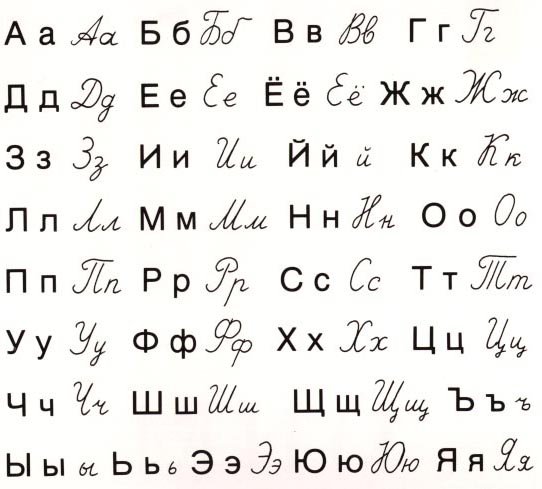Let's talk about some hurdles to learning the Russian language, in case you ever wanted to learn it.
Or, you could not. That would be easier.
But let's just say for some crazy reason, you are a glutton for punishment and you'd like to speak Russian.
Well, you are in luck! I have hereby laid out three easy steps to get you on your way to fluency in the Russian Language.
Step One: Learn a new alphabet!
This, my friends, is the Russian alphabet. Anything look familiar?
A couple letters? Yes.
Some new ones you probably haven't seen before? Heck yes.
The P is an R, the H is an N, the Y is really a U, and the B is a V. So that means a word like "Ресторан" is really pronounced Ryestoran (restaurant). Go ahead, try to get your brain to un-see years and years of training to recognize the American alphabet.
Oh! And you'll need to learn some new sounds.
Some more fun words:
свё = svyo = that's all, finished (c's are s's, and ё's are yo's)
Автобус = avtobus = Bus (that tricky 'y' makes an 'oo' sound)
харашо = xharasho = fine (p is really an r)
спасибо = spasiba = thank you (и makes an 'ee' sound)
So! Good times! You have mastered Russian sounds and the Russian alphabet, and you're used to all sorts of funky-looking letters. Now what?
Oh haha, you thought you were done with the alphabet?
Oh heck no.
Because guess what? There's Russian CURSIVE. And it looks nothing like printed Russian.
The D looks like a g in cursive, the T can turn into an m, the G turns into something that looks like an s, and goooooood luck with the ones that loop. They turn into this:
Don't even ask me what that says, because I can't read it.
Step Two: Master Russian Verbs!
If you haven't poked your eyes out with dull spoons yet, let's continue along on our journey.
You have mastered the alphabet in printed AND cursive Russian, and now you'd like to learn some basic grammar rules.
See, that was a trick sentence (gotcha!) because there IS no such thing as basic grammar in Russian. There is only complicated grammar.
Let's start with verbs. There are basically two verb groups, ones that end in -ить and those that end in -ать. So, depending one which it is, you will put on the appropriate ending. You have six options for each verb type: I, we, you, formal you, he/she/it, and they.
Got it? Great.
Step Three: Master Russian Cases!
Now you have to change everything else in your sentence, too.
Not only do the verbs change endings, but the nouns and adjectives do as well.
(It's so much fun, I just love it!)
[sarcasm]
There are SIX different cases, and within each case, FOUR categories of endings depending on if the word is Masculine, Feminine, Neuter, or Plural. So if you have a Masculine noun in the Genative case, it and all of its adjectives will change endings. And if you have a Feminine noun in the Accusative case in the same sentence, it and all of ITS adjectives will change as well.
So, here's your grammar chart:
So you, too, Dear Reader, can easily* master the beautiful Russian language, probably in a couple hours or so.
(I suddenly have a lot more respect for Tim, who speaks Russian beautifully and fluently. If I ever get to that point, I will consider it a miracle of vast proportions. He gave me a practice sentence the other day to translate into Russian using my grammar chart. It only took 15 minutes to finish. Woop.)
As for right now, I'm perfectly happy with pointing and grunting. It seems to get the job done.
*"Easy" may be a BIT of a stretch, depending on your definition of the word. Personally, I define it as "not leading to suicidal tendencies in most cases, except under extreme duress," in which case it works just fine.





No comments:
Post a Comment
Say something.